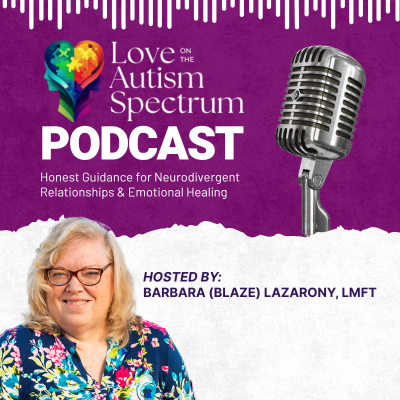Communicating with autistic people, including those with autism spectrum disorders, can seem complicated, but it doesn’t have to be. This article explores practical strategies for communicating with autistic people and adults to improve interactions. You’ll understand their unique communication styles, learn to use clear and direct language, and respect their preferences.
Please read this blog post to foster better communication and connection with close friends.
Key Takeaways
- Autistic communication differs from neurotypical communication, requiring understanding and empathy to bridge gaps effectively.
- Using straightforward language, allowing extra processing time, and respecting individual communication preferences are essential strategies for effective interactions.
- Creating inclusive environments that address sensory needs and promote self-advocacy fosters better relationships and enhances communication with each autistic individual.
Understanding How to Communicate with Autistic Adults
Autistic communication is uniquely distinct, characterized by different styles functional communication and approaches compared to neurotypical communication. Recognizing that these differences are variations, not deficiencies, requires understanding and empathy, especially for those with autism spectrum disorders. Communicating effectively with autistic individuals requires acknowledging their inherent communication preferences and methods. Often, societal misconceptions label autistic communication as incorrect or rude, failing to appreciate its authenticity and honesty.
Autistic adults face unique challenges in expressing and interpreting information, which can significantly impact their social functioning. Misunderstandings frequently arise when assumptions are made without clear communication from both sides, emphasizing the need for mutual learning and adaptation. An autistic person with developmental disabilities may experience these challenges differently than others.
Autistic Adults Communicate Differently, Not Deficiently
Autistic adults communicate differently, not deficiently. Research has shown that autistic individuals are just as expressive as neurotypical people and can understand each other perfectly well. This concept is often referred to as the double empathy problem, which highlights the mutual difficulty autistic and neurotypical people have in understanding and empathizing with each other. This issue arises not from a deficiency in communication among autistic neurotypical persons but from a difference in communication styles. Recognizing and respecting these communication differences is crucial for fostering successful communication and building meaningful relationships with each autistic individual.
Verbal and Non-Verbal Communication Styles
Autistic individuals typically communicate with directness and honesty, often differing in timing and duration of responses compared to neurotypical individuals. Their communication approach interactions may involve less eye contact and minimal facial expressions, which can be misinterpreted as disinterest or lack of engagement. Successful interactions depend on recognizing these non-verbal communication traits in an autistic individual or neurotypical person.
Alternative communication methods, such as visual supports and written forms, affect communication, bridge communication gaps, and enhance understanding. Many autistic individuals excel in visual communication and may use gestures or symbols, especially if verbal skills are limited. Respecting and understanding these preferences can foster more meaningful and effective interactions.
Social Interaction Challenges
Autism spectrum disorders can lead to significant challenges in social interaction and communication, impacting both verbal and non-verbal exchanges. Autistic people often struggle with interpreting social cues, such as facial expressions and body language, complicating their social interactions. Difficulty in reading subtle non-verbal signals usually leads to misunderstandings and awkward silences, especially for those with an autism spectrum disorder or disorders.
Sensory issues further complicate social interactions after autism diagnosis, as autistic individuals might experience sensory overload in noisy environments. This overload can make it challenging to focus on conversations, leading to misinterpretations and increased anxiety in social situations. Developing effective communication strategies for the autism spectrum and community requires understanding these unique challenges.
Echolastandardd Other Communication Challenges
Echolalia is a common communication challenge faced by each autistic individual. It involves repeating words or phrases, sometimes without apparent meaning or in an unusual context. While it may seem perplexing, echolalia can serve various purposes, such as self-soothing or attempting to communicate. Other communication challenges include difficulty interpreting both nonverbal and social cues and verbal cues like facial expressions and body language, as well as initiating and maintaining conversations. These challenges can be addressed through visual supports, augmentative and alternative communication (AAC) devices, and social skills training. These tools and strategies can significantly enhance understanding and interaction, making communication more effective and less stressful for autistic individuals.
Autism Spectrum Disorder and Communication
Autism Spectrum Disorder (ASD) is a neurodevelopmental condition that significantly impacts communication and social interaction. Autistic individuals often face verbal and nonverbal communication, including difficulties in understanding and using language, reading body language, and initiating and maintaining conversations. These challenges can vary widely among individuals on the autism spectrum, making it essential to adopt personalized communication strategies.
Effective communication strategies are crucial for supporting autistic individuals in developing their communication skills. For instance, using clear and direct language can help minimize misunderstandings, while visual supports can aid in comprehension for those who struggle with verbal communication. Additionally, allowing extra processing time and respecting individual communication preferences can make interactions more comfortable and productive.
Understanding the unique communication needs of autistic individuals and providing appropriate support can significantly enhance their ability to connect with others and build strong relationships. We can help bridge the communication gap and promote more meaningful social interactions by fostering an environment that accommodates diverse communication styles.
Practical Communication Strategies
Practical communication strategies help bridge the communication barriers between autistic and neurotypical individuals. These strategies focus on using clear and direct language, allowing extra processing time, and respecting communication preferences.
These approaches can significantly enhance interactions, ensuring successful communication and respectful communication.
Using Clear and Direct Language
Clear and direct language improves understanding and communication with each autistic individual. Using precise language and addressing it directly helps minimize confusion and ensure the message is conveyed accurately. Clear and simplified instructions are critical in noisy environments, as distractions can hinder effective listening and comprehension.
Breaking down tasks into sequential steps and asking specific questions can also aid comprehension. Organizing thoughts and verbalizing responses more effectively makes communication smoother and more efficient.
Allowing Extra Processing Time
Extra processing time is crucial since each autistic individual may need longer to process information and formulate responses. Adequate pauses between phrases during conversations facilitate better understanding and reduce the pressure to respond immediately. Demonstrating patience and encouraging them to take their time creates a more comfortable and supportive interaction environment.
Utilizing AAC systems can provide essential processing time for nonverbal autistic adults, ensuring they have the opportunity to express themselves fully. This patience and understanding contribute significantly to the effectiveness of the communication process.
Respecting Communication Preferences
Respecting an autistic adult’s communication style builds trust. Some may prefer verbal communication, while others may communicate non-verbally or through alternative methods such as writing. Honoring these preferences reduces sensory overload and creates more comfortable interactions.
Acknowledging and adapting to each individual’s preferred communication in a more inclusive and supportive environment. Respecting communication preferences is key to effective and meaningful interactions with autistic individuals.
Enhancing Social Interactions
Enhancing social interactions with autistic individuals requires recognizing their unique styles and adapting accordingly. Employing appropriate strategies based on these styles can lead to more enjoyable and effective social experiences for autistic friends.
This section provides practical tips for addressing sensory issues, respecting personal space, and managing anxiety in social situations.
Addressing Sensory Issues
Sensory issues significantly impact communication for each autistic individual. Noisy environments can lead to sensory overload and hinder effective communication. Environmental adjustments, such as reducing background noise and using softer lighting, can greatly enhance communication comfort.
Accessible environments that cater to sensory needs alleviate anxiety and make social interactions more comfortable. Inclusive environments respecting diverse communication styles and sensory needs foster better communication and reduce stress.
Recognizing and Respecting Personal Space
Personal space is crucial for comfort and communication for each autistic individual. Autistic individuals may require larger physical distances to feel safe and secure during social interactions. Open communication about personal space preferences using direct body language often ensures clarity and mutual respect.
Regularly checking in and adaptable to personal space needs enhances comfort and trust in relationships. Acknowledging personal space preferences is key to a supportive and respectful communication environment.
Managing Anxiety in Social Situations
Anxiety significantly impacts social interactions for each autistic individual, leading to high stress and overanalyzing situations. Cognitive-behavioral therapy (CBT) and mindfulness practices help manage anxiety and improve social communication skills. Relaxation time before and after social interactions helps autistic adults feel more at ease.
Clear expectations, visual aids, or other social norms can scripts enhance participation in social environments. These strategies reduce anxiety and create a more structured and predictable social experience, making interactions more enjoyable and less stressful.
Building Mutual Understanding
Building mutual understanding fosters effective communication and strong relationships with each autistic individual. It involves recognizing and respecting individual strengths, using active listening techniques, avoiding figurative language, and providing emotional support.
These approaches bridge communication gaps and empower autistic voices.
Active Listening Techniques
Active listening is crucial for effective communication with each autistic individual. Here are some techniques to improve your active listening and language skills:
- Reduce distractions.
- Focus without judgment.
- Avoid interrupting.
- Offer feedback.
Focusing without judgment fosters understanding social communication and trust by keeping full attention on the speaker.
If clarification is needed during a conversation, ask your loved one to rephrase what they said or clarify a point. Avoid assumptions to better understand each other’s feelings and enhance communication.
When communicating with autistic individuals, avoiding figurative language, idioms, and sarcasm is essential. They often interpret language literally, which can lead to confusion and misunderstandings. Clear and direct language ensures the message is understood accurately and reduces miscommunication.
Avoiding nonliteral language like idioms, metaphors, and humor creates a more straightforward and effective communication environment. This approach avoids confusion and ensures the intended message is conveyed clearly.
Providing Emotional Support
Emotional support involves respecting an autistic adult’s communication style, showing inadult’sin their responses, and listening actively. Autistic individuals often exhibit a unique strength in emotional intelligence, being highly tuned to others’ emotions.
Being upfront about others’ and controlling reactions positively affects relationships, nurturing trust and connection. This approach creates a supportive and empathetic communication environment, fostering stronger and more meaningful relationships.
Take Responsibility for Your Actions and Words
Taking responsibility for your actions and words is crucial in any relationship, including those involving each autistic individual. Recognizing your own contributions to communication challenges and taking responsibility for your actions can help improve the relationship. Reflecting on your motives and behaviors can identify areas for improvement, fostering a more positive interaction dynamic. Adding positivity to your interactions, such as through kind words and supportive actions, can help shift the dynamic and create a sense of security, trust, and acceptance. This approach not only enhances communication but also strengthens the overall relationship.
Treating Autistic Adults as Equals
Treating autistic adults as equals is fundamental to building trust, respect, and strong relationships. This approach involves recognizing and valuing their unique communication styles rather than attempting to change or “fix” them. Doing so creates a more inclusive and accepting environment that allows autistic adults to thrive and reach their full potential.
Here are some tips for treating autistic adults as equals:
- Respect their communication style: Avoid making assumptions about an autistic adult’s communication abilities or try to manage their style to fit your own. Instead, focus on understanding and adapting to their unique needs and preferences.
- Use clear and direct language: Autistic adults often prefer clear and direct language, avoiding idioms, sarcasm, and abstract concepts. Use simple and concise language.
- Avoid patronizing or condescending tone: Speak to autistic adults in apatronizingavoiding patronizing or condescending language that can be perceived as belittling or demeaning.
- Provide opportunities for autonomy. Autistic adults value independence and autonomy, so give them opportunities to make choices and take control of their own lives.
- Be patient and flexible: Communication with autistic adults may require more time and effort, so be patient and flexible when interacting with them.
By treating autistic adults as equals and recognizing their unique communication styles, we can build stronger, more meaningful relationships and create a more inclusive and accepting society. This approach not only enhances communication but also fosters a sense of respect and understanding, which is essential for the well-being and empowerment of autistic individuals.
Leveraging Visual Supports and Technology
Visual supports and technology significantly facilitate communication for each autistic individual. These tools provide clarity, reduce anxiety, and offer additional support for understanding.
Visual aids, schedules, and AAC devices enhance communication, making interactions more effective and enjoyable.
Visual Aids and Schedules
Symbols and schedules, as visual supports, significantly enhance communication for each autistic individual. These tools provide structure and predictability, reducing anxiety and improving understanding of daily activities. Visual aids complement spoken language, making communication more accessible and effective.
Augmentative and Alternative Communication Devices
Assistive technology includes speech-generating devices and visual schedules, significantly enhancing autistic individuals’ communication skills. These devices strengthen comprehension and expression, making communication more accessible and practical.
Low-tech AAC tools, such as visual supports, cards, picture books, and communication boards, can also be very effective. The Picture Exchange Communication System (PECS) helps nonverbal individuals express their needs and aids communication development.
These devices adapt over time to meet evolving communication needs, providing continuous support.
Improving Communication Skills in Everyday Life
Improving communication skills for each autistic individual involves practicing patience and flexibility, encouraging self-advocacy, and creating inclusive environments. These approaches help autistic adults develop language skills and foster better relationships.
This section provides practical communication tips, for enhancing communication in daily interactions.
Practicing Patience and Flexibility
Patience and understanding are crucial for better communication with each autistic individual. When misunderstandings arise, be patient and avoid losing your temper. Patience and flexibility enhance communication and foster better relationships, helping to bridge the communication gap.
When trying to improve communication skills, avoid focusing on perfection. Instead, focus on gradual improvements and celebrate small successes. This approach creates a more supportive and encouraging communication environment.
Encouraging Self-Advocacy
Self-advocacy builds confidence in each autistic individual, empowering them to seek assistance and communicate effectively. Promoting self-advocacy means encouraging them to express their needs clearly and assertively.
This empowerment of autistic traits helps them take control of their social communication and interactions, leading to more successful and meaningful social relationships. Encouraging self-advocacy fosters independence and confidence in autistic individuals.
Creating Inclusive Environments
Inclusive environments accommodate various communication styles and promote understanding and connection for each autistic individual. Offering options in questions rather than open-ended ones enhances understanding and communication.
Neurotypical partners demonstrate care by performing thoughtful gestures like cooking meals or running family members’ errands. These actions contribute to a supportive and inclusive environment, fostering social connections, better communication, and relationship satisfaction for all involved.
7 Tips for Autistic Adults to Improve Communication Skills
Here are some practical tips for each autistic individual to improve their communication skills:
- Practice Active Listening: Pay attention to others and show genuine interest in their thoughts and feelings. This helps build stronger connections and improves mutual understanding.
- Use Visual Supports: Incorporate pictures, written information, or other visual aids to help convey your message more clearly.
- Ask for Clarification: Don’t hesitate to ask for clarification if you don’t understand something. Taking timedon’trocess information can help avoid misunderstandings.
- Be Patient: Communication can be challenging, so be patient with yourself and others. Please don’t take offense at misunderstandingsdon’ttead; use them as learning opportunities.
- Utilize AAC Devices: If verbal communication is difficult, consider using AAC devices or other alternative communication methods to express yourself.
- Practice Mindfulness and Self-Regulation: Techniques like mindfulness can help you stay calm and focused, improving your communication ability.
- Seek Feedback: Ask for feedback on your communication style and be open to making changes. This can help you identify areas for improvement and enhance your communication skills.
Professional Support and Resources
Professional support and resources can play a crucial role in helping each autistic individual improve their communication skills and navigate relationships. Seeking professional support is essential for autistic adults who want to enhance their communication strategies and build strong relationships. Speech-language therapists, psychologists, and other professionals can provide customized interventions and support tailored to individual needs. Additionally, support groups and online resources offer a sense of community and connection, providing valuable insights and encouragement.
Some essential resources for autistic adults include:
- Speech-Language Therapy: Helps improve communication skills through targeted exercises and strategies.
- Social Skills Training: Provides guidance on navigating social interactions and building relationships.
- Augmentative and Alternative Communication (AAC) Devices: Tools like speech-generating devices and communication boards help people express their needs and thoughts.
- Online Support Groups and Forums: Offer a platform for connecting with others, sharing experiences, and seeking advice.
- Professional Counseling: Helps navigate relationships and improve communication skills through personalized support and guidance.
By leveraging these resources, autistic adults can develop effective communication strategies, build more substantial social relationships, and enhance their overall quality of life.
Importance of Seeking Professional Support
Summary
Effective communication with each autistic individual requires understanding, patience, and respect. You can foster meaningful and supportive interactions by implementing clear communication strategies, allowing extra processing time, respecting communication preferences, and creating inclusive environments. These approaches enhance communication and build stronger and more fulfilling relationships. Remember, every small effort counts in bridging the communication gap and supporting autistic individuals in your life.
Frequently Asked Questions
How to start a conversation with an autistic adult?
To start a conversation with an autistic adult, use their name at the beginning to capture their attention and ensure they are focused before speaking. Engaging them through their hobbies and interests can make you not understand something, not intend to be more meaningful, and not learn direct language with autistic adults.
Using clear and direct language is essential to minimizing confusion and ensuring accurate communication. This approach supports understanding for autistic adults who may find it challenging to interpret complex messages and fosters effective interaction and connection within the autism community.
How can I help an autistic adult manage anxiety in social situations?
To help an autistic adult manage anxiety in social situations, consider implementing cognitive-behavioral therapy (CBT), mindfulness practices, and providing clear expectations along with visual aids. These strategies can significantly enhance their comfort and communication skills.
What are some effective non-verbal communication methods for autistic individuals?
Effective non-verbal communication methods for autistic individuals include visual aids, symbols, gestures, and augmentative and alternative communication (AAC) devices. These tools significantly improve understanding and expression, particularly for those with limited verbal abilities.







